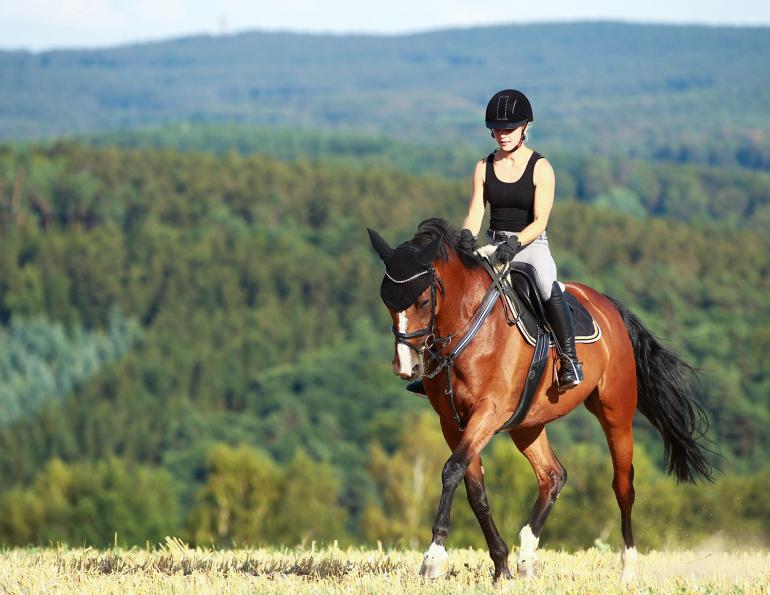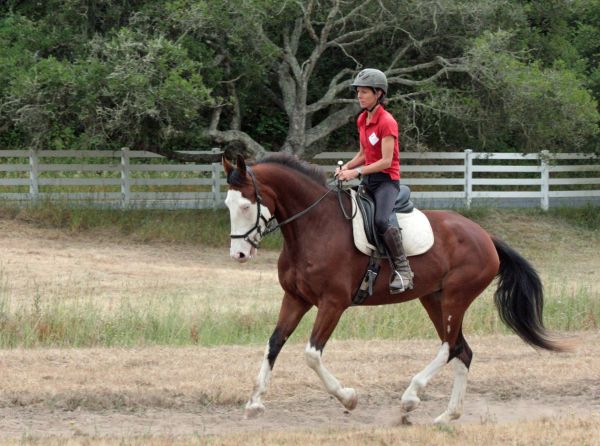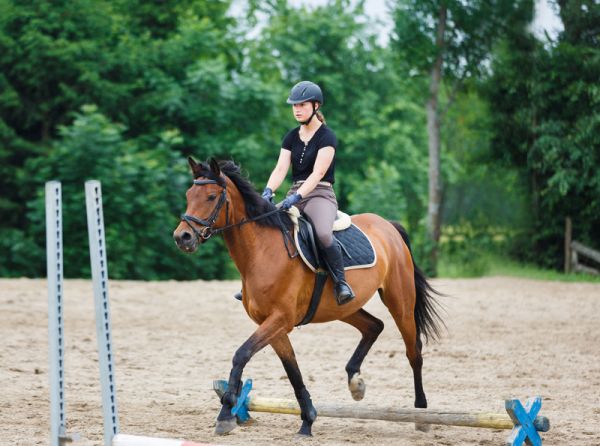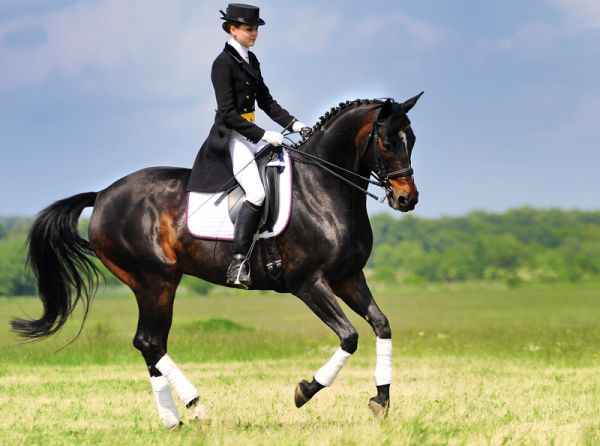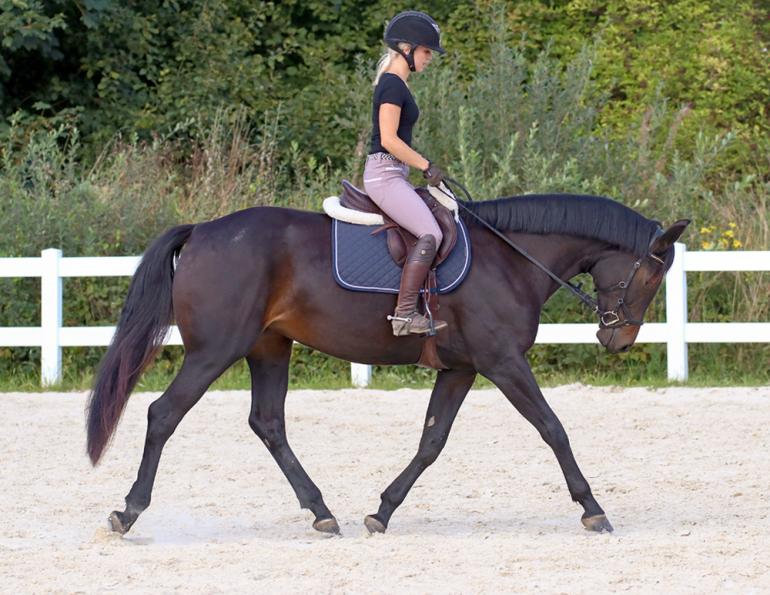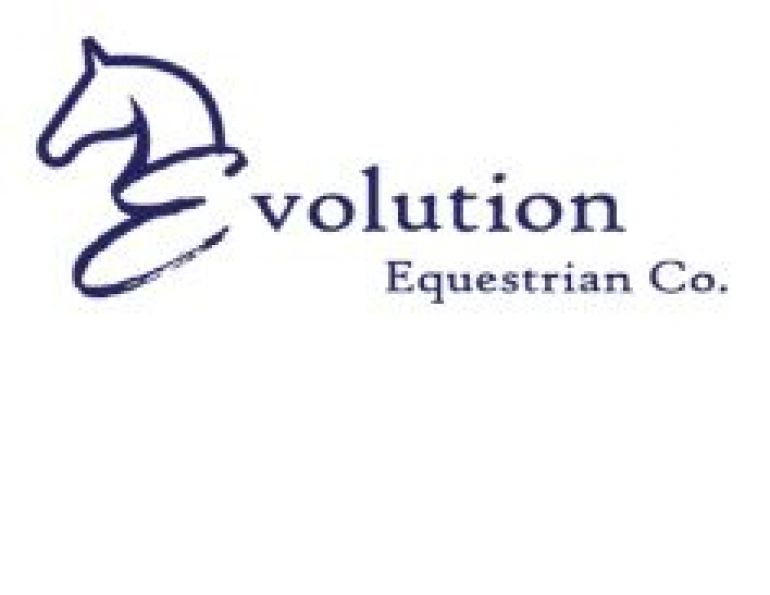Cross-training used to be something I casually promoted. Nowadays, I support it like a zealot. In fact, I might even argue that one cannot call herself a horse trainer unless she follows a cross-training program. My increasing commitment has risen in equal parts from exercise physiology research and my hands-on training results.
Unquestionably, the most efficient way to improve a body’s mechanics and movement is through varied training stimuli.
The fact that many riders do not cross-train weekly puzzles me. And yet, I recognize that maintaining this routine might seem time-consuming, daunting, or possibly even frivolous. It need not be time-consuming, as I’ll outline below. As for it being worthwhile, consider for a moment the benefits.
First, a quick definition: I define cross-training as exercises that, through coordination or intensity or range of motion, require the horse to use his body differently from his everyday workouts. For arena horses, this could mean traversing alternative terrain. For horses that ride primarily at brisk speeds, it could mean working through slow-moving, precise footwork. For horses that rarely do so, it would include negotiating obstacles.
By definition, cross-training differs from how the horse exercises a majority of each week. For this reason, his nervous system recruits muscle fibres with more force to accomplish the task. This is due to novelty. Much like humans, horses’ neuro-muscular systems are designed for efficiency. Over time, they recruit fewer muscle fibres, and at weaker forces, to accomplish tasks they have mastered. This allows them to become more efficient at accomplishing a task, from running 100 miles to working through dressage patterns. Unfortunately, this limits the conditioning effect those tasks can have when continually practiced.
Related: The Benefits of Cantering Your Horse
Varied muscle recruitment through cross-training is a way to “wake up” the nervous system and stimulate fuller muscular contractions on a regular basis. This leads to a greater number of muscle fibres being recruited in addition to generating more forceful effort. This conditioning effect carries over to the horse’s normal exercises, resulting in fuller participation of the neuro-muscular system overall.
Additionally, cross-training mitigates the mental dullness that arises from repetition of routines within any discipline. Modern science has shown us that in order to continue learning or refining skills, a horse must be in a state of calm, curious mental engagement. Only then does his brain map new movement patterns. Without sufficient mental interest, training will lack a conditioning effect. By cross-training, we can select from a range of exercises to refine the chosen skills without allowing boredom to limit our progress.
And, lastly, my own personal opinion is that you can often accomplish gains faster by stepping outside your chosen discipline. One recent example from my own training illustrated this, so I’ll share it with you here.
An athletic little mare that was quite side-dominant (always drifting with her body towards the left) showed up at my barn for some lessons to help resolve this issue. To date, her rider had done everything right. She rode the mare in lots of circles trying to bend and align her spine. She practiced leg yielding, rein-backs, and other arena exercises. But the mare just got STRONGER in her asymmetry. The fitter she got, the more solidified in her crookedness she became.
I suggested she spend a few weeks riding the mare down hills in a very slow walk. To keep her body straight while walking downhill in this controlled manner, the mare had to organize and balance her torso. She needed to use each pectoral muscle equally; she needed to flex each hind limb evenly. With each step down the hill, she needed to allow her scapulae to rotate backwards, rather than using her over-developed left shoulder to drag her along as she did in the arena.
Through this simple routine, the horse was able to change much of her existing movement pattern that had become so strong in its incorrectness. These changes then allowed her rider to accomplish more with her arena exercises and to make more progress overall. This is just one example of what I consider working smarter rather than working harder.
A variety of training stimuli allows us better access to the horse’s nervous system and muscular effort. This variety keeps the horse mentally and physically engaged better, enabling our physical conditioning to have results.
Related: Exploring Leg-Yield with Jec Ballou
Related: How to Reduce the Risk of Training Related Injuries
Photo: Shutterstock/Rolf Dannenberg



